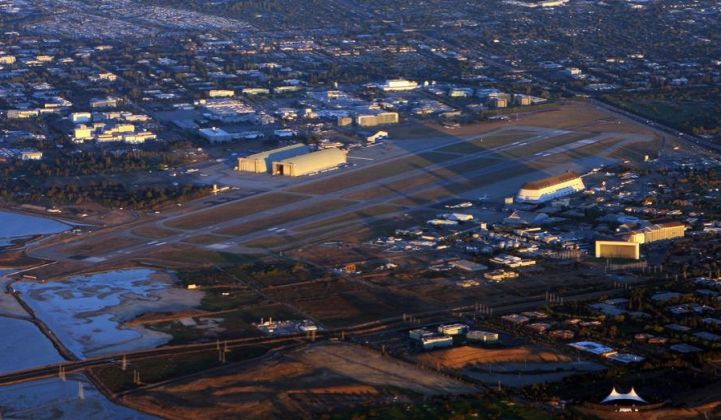Why doesn’t Silicon Valley have its own version of a smart energy zone -- something like the Austin, Texas Pecan Street Project, or the smart cities popping up across Europe and Asia?
This week, nonprofit group Joint Venture Silicon Valley and a group of heavies including the Electric Power Research Institute (EPRI), Google, Applied Materials, NetApp, Juniper Networks and Pacific Gas & Electric announced their answer to that question. Known as the Smart Energy Enterprise Development Zone, or SEEDZ, the initiative’s goal is to foster a range of clean energy and smart grid technologies in the eight-square-mile region, with an interesting early focus on managing grid power quality -- an issue that can cost high-tech power users dearly, and thus is worth spending money on to solve.
“There isn’t anything quite like this in Silicon Valley,” said the group’s executive director Don Bray, a 20-year Accenture veteran and co-founder of AltaTerra Research. Essentially, it’s a think tank, tasked with a big goal: integrating technologies including solar and wind power, energy storage, biogas and fuel cell power and smart grid and building energy management, into a network that helps the region save energy, reduce carbon emissions and otherwise go green.
There’s a long way to go from there, in terms of funding -- the member-supported group hasn’t yet announced any projects, and doesn’t see itself as a financing or project management entity, Bray said. “The best way to describe this is a platform for collaboration, among lots of talented and interested parties,” he said.
The zone itself includes north Sunnyvale, south Mountain View and NASA’s Moffett Field, plus about 300 businesses, including some of the aforementioned partner companies that have office or lab space there, as well as others like Microsoft. All told, the area uses about 200 megawatts of power, Bray said.
In the long term, SEEDZ will include not only energy, but resource management and sustainability goals. But in the shorter term, the zone has a specific problem with grid power quality, he said. Historically, the Sunnyvale portion of the zone has suffered from poor power quality, a problem that can lead to flickering light bulbs in homes, but can wreak havoc on lab experiments or long-running IT projects -- the kinds of work common to tenants of the zone, he noted.
“A sub-second blip of some kind can shut you down. Those metrics aren’t measured at the utility level, at least not categorically. We’re thinking of how we can raise the bar.” The work has already begun, with a meeting last week of representatives of participating companies like Google and Campbell, Ca.-based Applied Power Technologies, to talk about collecting site-specific data on power quality metrics over time -- data that most utilities, even those with smart meters, don’t have at hand.
Beyond that, SEEDZ members have plans to start collecting a wider range of power information, perhaps via installation of smart meters, or “simply making visible the meters that already exist around the zone,” he noted -- lots of big commercial buildings already have interval meters to tap or building management systems with data to share. Plug-in electric vehicle charging is another interesting data set -- Google’s plug-in parking lot is the world’s biggest, but most of the other big tenants in the zone have at least one or two EVs charging as well.
Then there’s the question of distributed energy. The SEEDZ zone already has at least 13 megawatts of distributed generation capacity, Bray said -- about 40 percent of it solar PV, but also including a good share of landfill biogas energy, power from NetApp’s nearby data center cogeneration system, and installations from fuel cell startup Bloom Energy, which hasn’t named itself a SEEDZ partner, but has sent representatives to the group’s meetings on power quality, he said.



